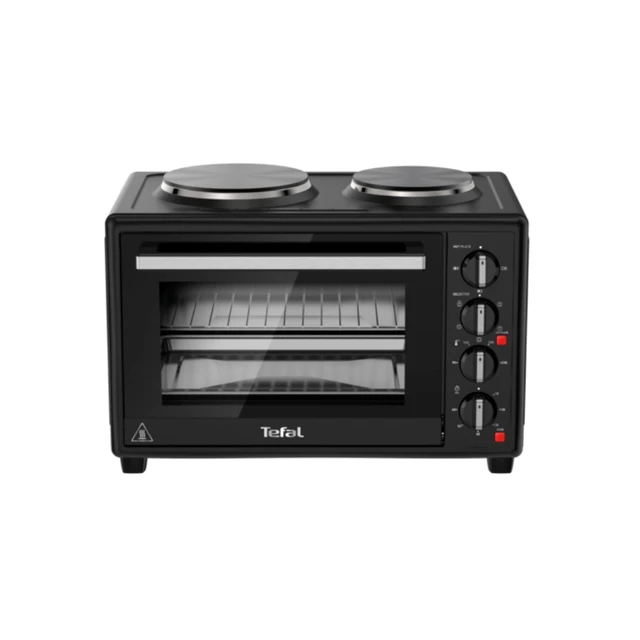Introduction:
The type of oven you have in your kitchen can significantly impact your cooking experience and the results you achieve. One common question that arises is whether an electric oven has a fan or if it is gas-powered. In this article, we will explore the distinctions between electric ovens and gas ovens, focusing on their heat sources and the presence or absence of fans. Understanding these differences will provide clarity on how each type of oven operates and help you make informed decisions when selecting an oven for your cooking needs.

Is an electric oven fan or gas?
Electric Ovens:
a. Heat Source: Electric ovens use electricity as their primary heat source. They typically have heating elements located at the top and bottom of the oven cavity, which generate heat when electrical current passes through them.
b. Heating Element Function: The heating elements in electric ovens become hot and radiate heat throughout the oven cavity, creating a consistent temperature environment for cooking.
c. Absence of a Flame: Electric ovens do not rely on an open flame for heat generation. Instead, the heating elements produce heat through electrical resistance, making them a safe and reliable option for home cooking.
d. Fan-Assisted Electric Ovens: Some electric ovens feature an additional fan located in the back of the oven cavity. This fan helps circulate the heated air, ensuring even heat distribution and promoting faster, more uniform cooking.
Gas Ovens:
a. Heat Source: Gas ovens utilize natural gas or propane as their heat source. A gas supply is connected to the oven, and when the gas is ignited, it produces a flame that generates heat.
b. Gas Burners: Gas ovens have gas burners, typically located at the bottom of the oven cavity, where the gas is ignited to produce heat.
c. Flame Function: The gas flame in a gas oven provides radiant heat, which then spreads naturally throughout the oven cavity.
d. Convection Gas Ovens: Some gas ovens feature a convection fan, similar to fan-assisted electric ovens. The fan in a convection gas oven helps circulate the hot air, improving heat distribution and ensuring consistent cooking results.
Fan-Assisted Electric Ovens vs. Convection Gas Ovens:
a. Similar Function: Both fan-assisted electric ovens and convection gas ovens incorporate a fan to enhance heat distribution and cooking performance.
b. Heat Circulation: The fan in these ovens helps circulate the hot air, ensuring more even heat distribution throughout the oven cavity. This results in faster and more consistent cooking, as well as reduced hot spots and cold spots.
c. Energy Efficiency: Fan-assisted electric ovens and convection gas ovens are generally more energy-efficient compared to their non-fan counterparts. The improved heat circulation allows for shorter cooking times and lower energy consumption.
d. Cooking Flexibility: Fan-assisted electric ovens and convection gas ovens offer versatility in cooking techniques. They are suitable for various recipes, such as baking, roasting, and multi-rack cooking, as the fan helps maintain consistent temperatures and even cooking results across multiple shelves.
Non-Fan Electric Ovens and Gas Ovens:
a. Heat Distribution: Non-fan electric ovens and gas ovens rely on natural convection, where heat rises and circulates within the oven cavity without the assistance of a fan.
b. Hot Spots and Cold Spots: Without the aid of a fan, non-fan electric ovens and gas ovens may have slight variations in heat distribution. This can result in localized hot spots or cold spots, requiring some attention to oven positioning and rack placement to ensure even cooking.
c. Suitable Cooking Methods: Non-fan electric ovens and gas ovens are still capable of excellent baking, roasting, and cooking results. However, it may be necessary to rotate or rearrange food during cooking to compensate for any uneven heat distribution.
Advantages of Fan-Assisted Electric Ovens and Convection Gas Ovens:
a. Improved Heat Distribution: The presence of a fan in fan-assisted electric ovens and convection gas ovens ensures more even heat distribution, reducing the likelihood of undercooked or overcooked areas in your baked goods or roasted dishes.
b. Faster Cooking Times: The improved heat circulation in these ovens allows for faster cooking times. This can be advantageous when time is a constraint or when baking recipes that require precision in timing and texture.
c. Enhanced Browning and Crispness: The fan in these ovens facilitates better browning and crispness in baked goods and roasted dishes. It helps create a desirable golden crust and promotes the development of flavors and textures.
d. Multi-Rack Cooking: Fan-assisted electric ovens and convection gas ovens are particularly suitable for multi-rack cooking. The even heat distribution provided by the fan ensures consistent cooking results across multiple shelves, allowing for more efficient use of oven space.
Conclusion:
The presence or absence of a fan in an oven depends on whether it is an electric oven or a gas oven. Electric ovens, both fan-assisted and non-fan models, use heating elements to generate heat and may have a fan to enhance heat distribution. Gas ovens, including convection models, rely on a gas flame as the heat source and may also incorporate a fan for improved heat circulation. Fan-assisted electric ovens and convection gas ovens offer benefits such as even heat distribution, faster cooking times, and enhanced browning and crispness. Non-fan electric ovens and gas ovens still provide satisfactory cooking results but may require more attention to heat distribution and rack placement. When selecting an oven, consider your cooking preferences, energy source availability and cost, and desired features to find the oven that best meets your needs.

